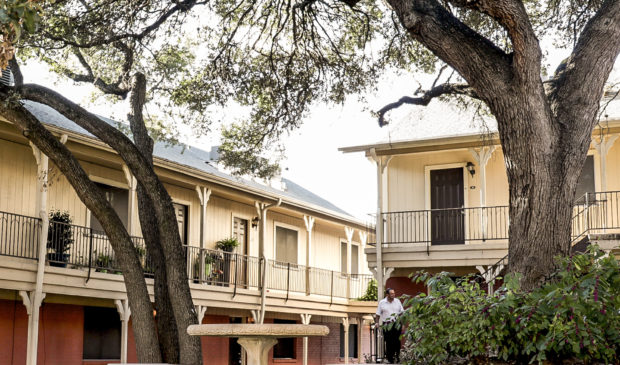Workforce housing group eyes four apartment complex purchases in 2019
Thursday, January 17, 2019 by
Chad Swiatecki An investment group focused on preserving workforce housing units around Austin has announced plans to add 1,200 more apartment units to its portfolio in 2019.
The Austin Housing Conservancy Fund expects to purchase four apartment complexes around the city this year in addition to the three complexes it bought in 2018 that gave it nearly 800 units with roughly 1,200 residents.
Unlike traditional real estate investment groups, the conservancy was organized with a nonprofit organization and created specifically to keep rents in its portfolio affordable to residents and families earning between 60 and 120 percent of the area’s median income. Units targeted at that income level are harder to build and preserve than lower-income units classified as affordable because there are fewer subsidies and other government programs available to decrease their costs.
David Steinwedell, CEO of Affordable Central Texas, which sponsors and manages the fund, said there is growing upward pressure on rents in Austin caused by outside investors who see the city as an attractive market. That demand makes it common for buyers to purchase workforce housing stock, make high-end improvements and charge upper-class rents.
“There continues to be a ton of capital coming from outside of Austin that wants to invest in property here right now, which has been exacerbating the problem, and it also makes it a very competitive acquisition market,” he said. “Over time I’m hoping that we’ll be able to grow our pace, but right now I think four more complexes is a reasonable expectation of what we can accomplish in 2019.”
Last year the conservancy closed on three properties located in North and Central Austin: The Preserve at Wells Branch, Northwest Hills and The Place at Terracina. Steinwedell said he would like the next round of purchases to include locations in South and West Austin and to be located near transit, job centers and grocery stores, but that the availability of markets up for sale and their prices are large factors in the buying process.
Thus far the conservancy has been funded with investments from 25 members in Austin, with that number expected to approach 50 this year and regional and national investors expected to come on board as well.
Steinwedell said the move into workforce housing has had its challenges, including a menu of maintenance requests by previous management, and move-out threats by nearly two dozen tenants at one of the properties. He said those issues were addressed quickly and tenants have been pleased to hear that rents will stay in line with area incomes rather than growing at a nearly double-digit rate.
“The upside surprise is how welcome we’ve been made to feel by the existing tenants when they start understanding that our program isn’t to to kick them out like a lot of others where they’re going to come in to do these massive renovations and they displace all the tenants and raise rents dramatically,” he said. “When we tell them that no, no, you’re not going to be asked to move and in fact we’d like for you to stay, that’s kind of a happy day for a lot of people.”
Steinwedell said in the future he expects the conservancy could get into the development game and work to build new housing stock for working families, but for the near term its focus is on growing its portfolio to a size that can offer housing to around 20,000 residents over the next decade.
Also participating in the conservancy’s 2018 purchases was Bellwether Enterprise Capital, a national lender that offered the Fannie Mae loan of nearly $50 million for the Northwest Hills and Terracina properties.
Kevin Bowen, Bellwether’s senior vice president, said affordable and workforce housing is a priority for the company because it is seen as stable and less risky than projects that require more capital for expensive improvements to command high rents.
“We view these affordable housing projects … we think that they are stronger than a market-rate project because they’re not relying on those rent increases but they’re also very much needed in the society we live in today,” he said. “And in Austin with the rate that rents are increasing there and in other major areas, you have even more of the need for affordable housing.”
Photo of The Preserve at Wells Branch courtesy of the Austin Housing Conservancy. This story has been changed since publication to note the grouphas announced plans to add 2,000 more apartment units to its portfolio in 2019, not 1,200 more apartment units, as was originally reported. .
The Austin Monitor’s work is made possible by donations from the community. Though our reporting covers donors from time to time, we are careful to keep business and editorial efforts separate while maintaining transparency. A complete list of donors is available here, and our code of ethics is explained here.
You're a community leader
And we’re honored you look to us for serious, in-depth news. You know a strong community needs local and dedicated watchdog reporting. We’re here for you and that won’t change. Now will you take the powerful next step and support our nonprofit news organization?











